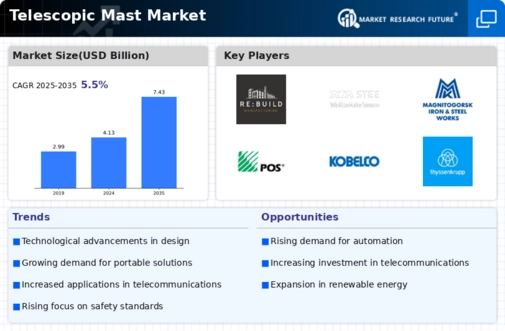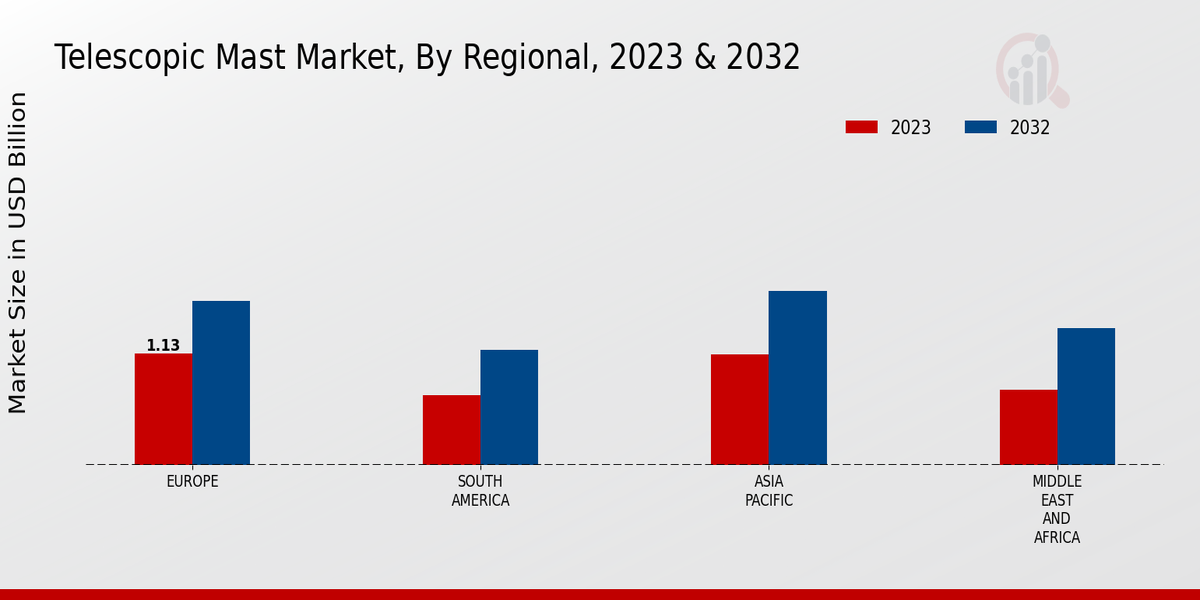Telescopic Mast Market Summary
The Global Telescopic Mast Market is projected to grow from 4.13 USD Billion in 2024 to 7.43 USD Billion by 2035, reflecting a robust growth trajectory.
Key Market Trends & Highlights
Telescopic Mast Key Trends and Highlights
- The market is expected to experience a compound annual growth rate (CAGR) of 5.48% from 2025 to 2035.
- By 2035, the market valuation is anticipated to reach 7.43 USD Billion, indicating substantial growth potential.
- in 2024, the market is valued at 4.13 USD Billion, laying a solid foundation for future expansion.
- Growing adoption of advanced communication technologies due to increasing demand for mobile connectivity is a major market driver.
Market Size & Forecast
| 2024 Market Size | 4.13 (USD Billion) |
| 2035 Market Size | 7.43 (USD Billion) |
| CAGR (2025-2035) | 5.48% |
Major Players
Tripods Towers, Composite Resources, Ansteel, Tata Steel, Magnitogorsk Iron and Steel Works, POSCO, Kobe Steel, ThyssenKrupp, Nippon Steel, Baosteel, Salzgitter, Sapa, ArcelorMittal, Larsen Toubro, JFE Steel, Primetals Technologies


























Leave a Comment